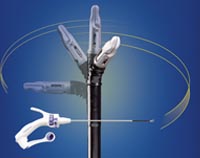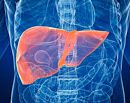Laparoscopy is a modern method that is widely used in surgery and gynecology. Effectively laparoscopy is used in the treatment of many gynecological diseases, including infertility.
Content
The concept of laparoscopy
Laparoscopy - a method of modern surgery, at which without a cut, with the help of special optical devices, an inspection of the abdominal organs and a small pelvis. Laparoscopy also refers to modern methods of infertility diagnostics. It is hard to call any of the pathologies of small pelvis organs, diagnosis and treatment, which cannot be carried out by laparoscopy methods.
Laparoscopy in gynecology is a new method for the effective treatment of various gynecological diseases, which reduces the time of recovery of patients and not to leave cosmetic defects on the body after the operation. The current state of technology allows you to apply laparoscopy, both for diagnostic purposes and for operational intervention. Operational laparoscopy makes it possible to treat infertility, endometriosis, ovarian cysts, misa uterus, ectopic pregnancy, etc. The use of laparoscopy in gynecology has opened a new effective course in the treatment of infertility.
Laparoscopy options
There are three types of laparoscopy. Diagnostic laparoscopy lies in visual inspection of organs using an additional manipulator. This type of laparoscopy is carried out to confirm or refute the diagnosis, or verification of the general condition and functioning of the organs, for example, the passability of the uterine pipes.
Operational laparoscopy covers almost the entire volume of gynecological operations and is usually used to eliminate detected pathological changes.
Control laparoscopy is carried out in order to control the effectiveness of a previously conducted surgery.
Indications for laparoscopic operations in gynecology
Today, laparoscopic operations are widely used in many areas of medicine, including gynecology. The main testimony to laparoscopy is:
- infertility
- cysts and egg tumors
- Endometriosis
- Polycystic ovarian syndrome (SPKI)
- Myoma uterus
- adenomyosis
- Hyperplastic processes endometrial
- Terilization
Features of laparoscopy
 For laparoscopy, 3 small punctures (5 and 10 mm) are made in the front abdominal wall. These punctures, in contrast to the traditional cut, do not injure muscle tissue - patients almost do not experience pain after the operation and usually return to normal life in a week. The puncture itself of the abdominal wall is carried out by a trocar - a special metal tube. A small amount of carbon dioxide is introduced to create a volume in the abdominal cavity, then the trocar is introduced the telescope tube to which a special small camcorder and light source are connected, which allows you to consider the image of the organs during an operation on the screen with a large magnification. Through the remaining two trocarars in the abdominal cavity, micromanipulators are injected directly to perform laparoscopy.
For laparoscopy, 3 small punctures (5 and 10 mm) are made in the front abdominal wall. These punctures, in contrast to the traditional cut, do not injure muscle tissue - patients almost do not experience pain after the operation and usually return to normal life in a week. The puncture itself of the abdominal wall is carried out by a trocar - a special metal tube. A small amount of carbon dioxide is introduced to create a volume in the abdominal cavity, then the trocar is introduced the telescope tube to which a special small camcorder and light source are connected, which allows you to consider the image of the organs during an operation on the screen with a large magnification. Through the remaining two trocarars in the abdominal cavity, micromanipulators are injected directly to perform laparoscopy.
The advantage of laparoscopy lies in the low traumaticity of the performed intervention and, of course, the short periods of stay of the patient in the hospital (2-3 days), the rapid restoration of health after the operation. Laparoscopy under great magnification makes it possible more accurately and least traumatic for the patient to carry out any operational intervention. In the period of healing injuries after laparoscopy, there are no painful sensations - there is no need to use potent anesthetic drugs. Significant advantages can also include the absence of postoperative scars that are observed during cut operations. In addition, with laparoscopy, the accuracy of the disease diagnosis is approaching 100%.









